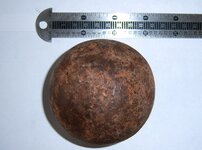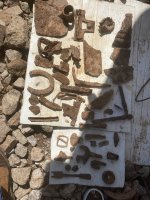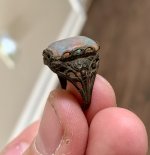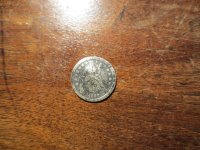I purchased a cannon ball from an antique shop about 20 years ago but I'm not really sure what type it is. Can someone help me? It is solid, about 3" across and heavy, about 4 -5 lbs.
Can someone give me an idea what type cannon ball this is? Or is it a cannon ball after all?
Thanks for any help.
Jon
Can someone give me an idea what type cannon ball this is? Or is it a cannon ball after all?
Thanks for any help.
Jon







